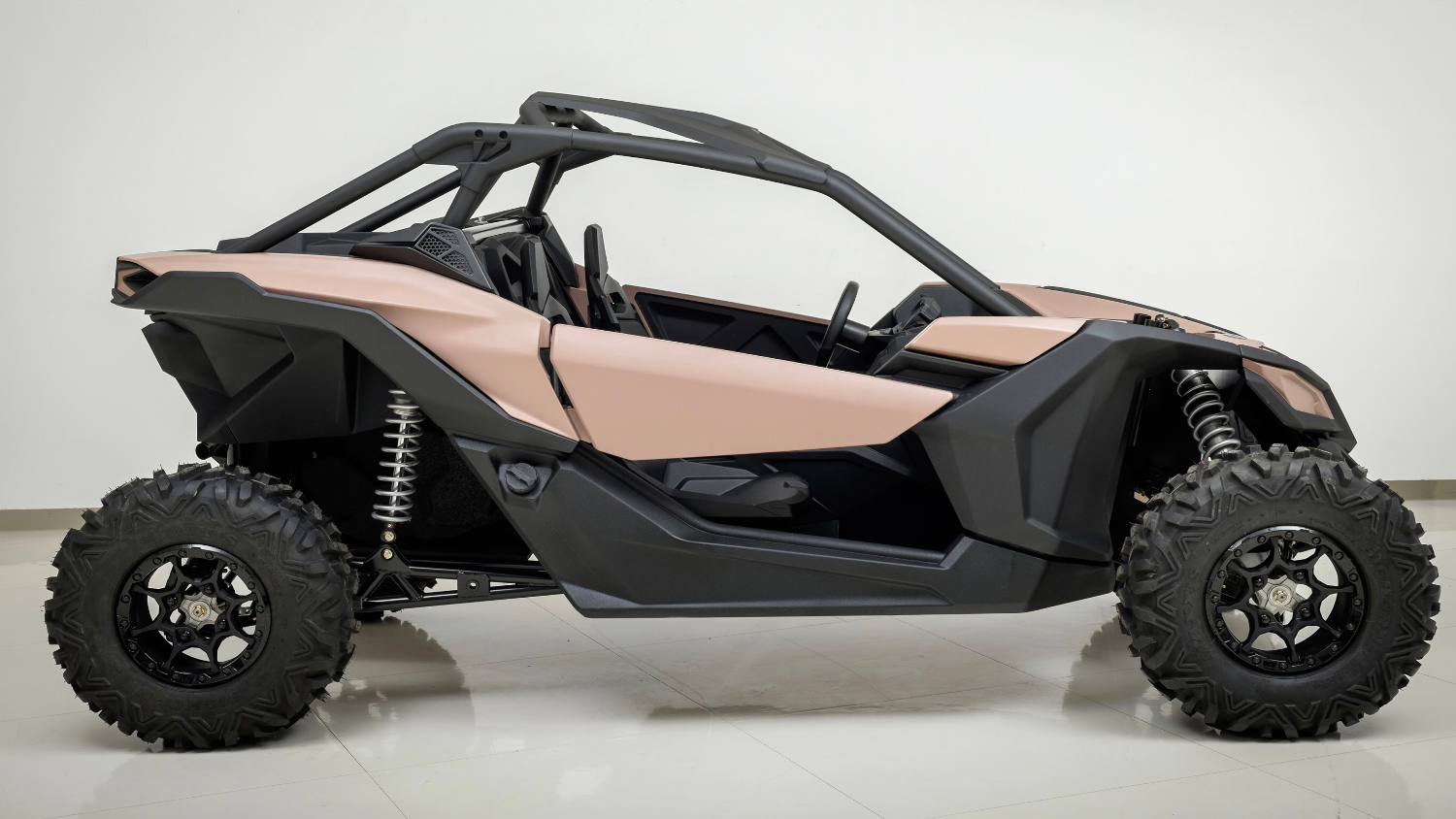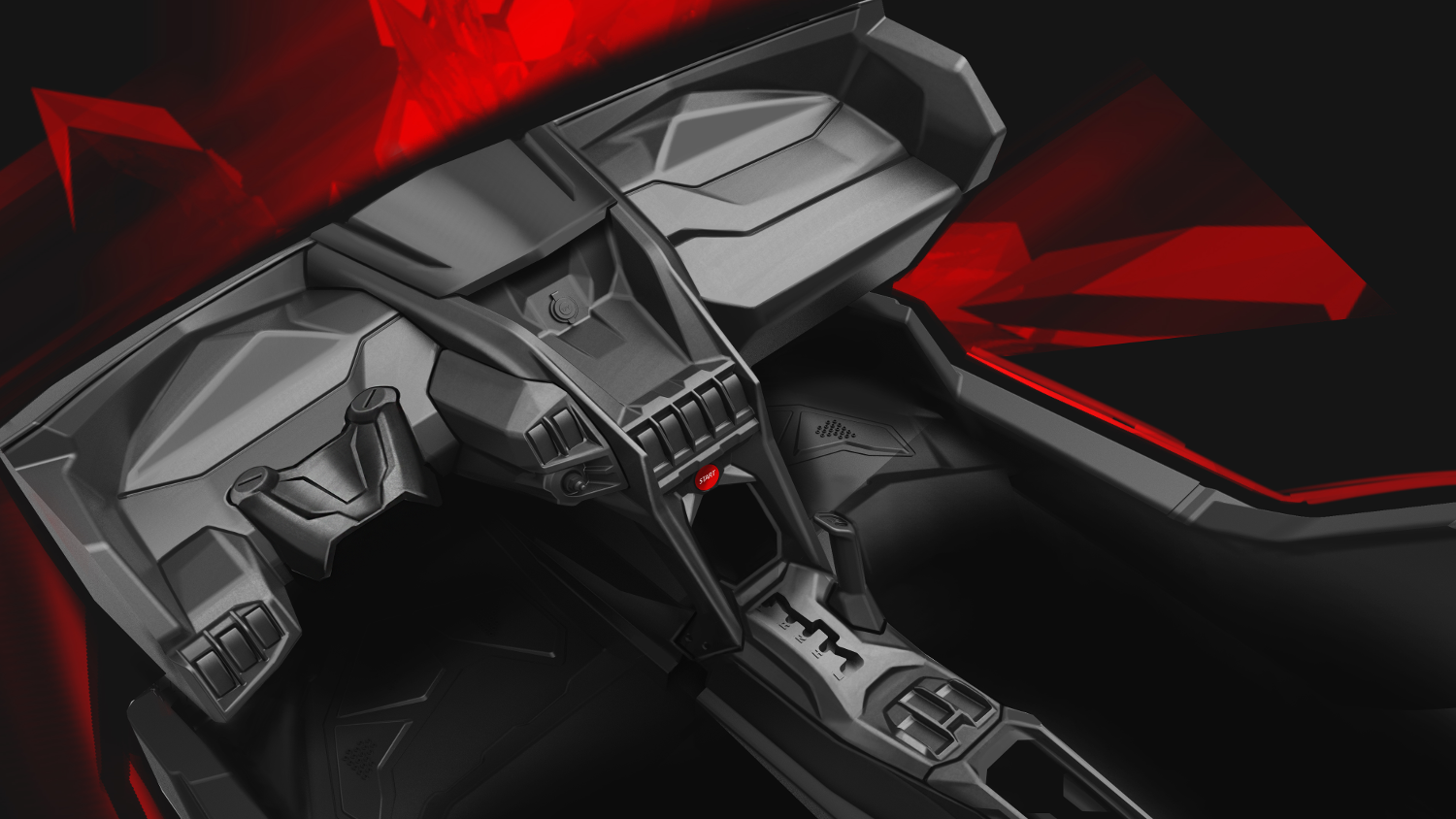Built to tackle even the most arduous terrain, the Can-Am Maverick is capable of thrilling any driver with its speed and control. Stephen Holmes learns more about a design that combines rugged strength with cutting-edge technology
Whether skirting across sand dunes, jumping dirt banks, or ascending the steepest hills, the Can-Am Maverick is an off-road vehicle built to tackle almost any challenge. And thanks to its side-by-side seating, the adventurous driver can have the pleasure of sharing these thrills with a passenger.
It’s a design project that began life with a clean sheet of paper, according to Can-Am design director Matt Tandrup, speaking from the Canadian company’s headquarters in Valcourt, Quebec.
“When the project was kicked off, we did not just want to create another performance side-by-side,” he says.
“We wanted to push innovation and tech, to leapfrog the industry and create the new benchmark for years to come. Hence our efforts to start from the ground up and give zero limitations for our team.”
The project took over 36 months from concept to production, passing through many iterations, both digitally and in physical prototypes.
Can-Am, part of Bombardier Recreational Products (BRP), uses different workbenches from the Dassault Systèmes Catia suite, including Freestyle and Generative Shape Design for exterior surfaces. These are then passed through to the company’s engineering department, which processes them, along with mechanically designed components, using Catia Part Design, Assembly Design and other simulation environments.
“Although BRP heavily relies on digital design, we also use some form research, by utilising traditional clay modelling and 3D milling of hard models,” adds Tandrup. “The process is quite seamless, as we tend to use CAD to generate the design and then validate it through physical models. With a host of resources like in-house 5-axis machining, [mixed with] 3D printing, models can be rapidly produced, giving us greater efficiency in our design process.”
A common database is used to handle all the 3D model data, but daily communication in person, over the phone, or with the help of online meeting tools, are still key to the team’s efficient product development.

Can-Am – Technology advances
The robust design of the Maverick is balanced with the latest technology, with experience gleaned from epic challenges in events like the Dakar Rally.
All four corners of the Maverick Sport are equipped with double A-arms and sway bars. This solid frame forms the base for Can-Am’s latest Smart-Shox technology – fully self-adjustable suspension capable of controlling both compression and rebound for a superior ride and handling, no matter the terrain or conditions.
Smart-Shox works through 9 sensors that feed real-time data into an onboard computer capable of making up to 200 shock valving adjustments per second. This allows the suspension to travel from full stiff to full soft in just 17 milliseconds. The result is flatter cornering, giving the driver more confidence. Bottom-out and topping-out protection is factored into the automatic calibration.
To test such aspects of the vehicle as suspension performance, as well as everything from engines through to ergonomics, the design team relied on several full-scale prototypes. These were camouflaged to protect the designs from prying rival eyes and sent out to test tracks. The results and feedback from drivers was then fed back into the CAD models.
“At BRP, our prototyping and validation is extremely rigorous to ensure our end products exceed the customer’s expectations,” says Tandrup. This meticulous approach extends to choosing the best materials – extremely important in projects like the Maverick, where passenger safety and vehicle reliability are so important. For Tandrup, it’s about making sure Can-Am can deliver “the strongest vehicle that will endure whatever our demanding customers throw at it, while maintaining superior power to weight ratios.”

Fit and finish quality is also an important staple of the Can-Am brand, he adds. “So we need not only the right materials, but intelligent design on how they are manufactured and assembled.”
This extends to the interior, often neglected in off-road vehicles (ORVs). For the Maverick, the design team paid particular attention here to ergonomics and rider aids. Designed for all-day comfort with well-placed controls, occupants are secured in 4-way adjustable bucket seats with 4-point harnesses.
Can-Am ORVs come with a wide range of optional extras, for a customised owner experience. These include a built-in, fully sealed waterproof audio system, and a 7.6 inch driver display built to be readable in even the most challenging conditions.
Yet at its core, the Maverick is a vehicle designed for pure off-road thrills. The hardest decision may be who you choose to sit alongside you on your adventure.






